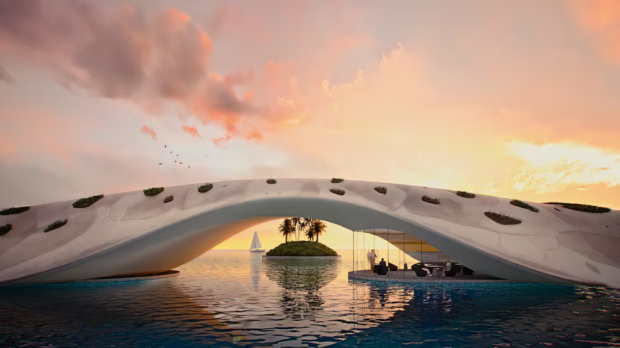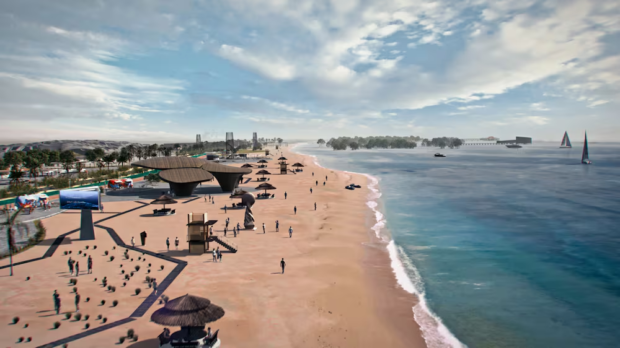
Dubai on Sunday unveiled plans for the construction of the emirate’s longest public beach in Jebel Ali, which is set to serve as a major eco-tourism destination.
Sheikh Hamdan bin Mohammed, Crown Prince of Dubai, approved the master plan for the Jebel Ali Beach Development Project, which will stretch 6.6km and will allow visitors to watch turtles in their natural habitat.
It is part of a wider strategy to revamp Dubai’s public beaches and increase their size by 400 per cent under the Dubai 2040 Urban Master Plan.
“Our focus is on creating spaces rich in beaches, open areas, and recreational greens,” Sheikh Hamdan said.
“The ultimate goal is to enhance the well-being of the city’s people, create a healthy environment for all and make Dubai the world’s best place to live in.”
Dubai Media Office said the beach, to be built in an existing wildlife sanctuary, will be a “distinctive recreational destination that places a high priority on environmental preservation and the protection of local ecosystems and
wildlife”.

Pioneering project
Mattar Al Tayer, Dubai’s commissioner general for infrastructure, urban planning and well-being, said the tourist spot would emphasise championing nature.
“An open beach for the public and a site of global environmental importance, the Jebel Ali Beach Development Project is the first of its kind in the UAE,” he said.
“It is located within the Jebel Ali Wildlife Sanctuary, listed under the Ramsar Convention on Wetlands of International Importance.
“The beach’s development will ensure the preservation and enhancement of ecosystems and wildlife at the site, including enhancing turtle habitats and planting mangrove trees, which will contribute to blue carbon footprint growth and provide an open beach with minimal impact on ecological and biological systems.
“Jebel Ali Beach will be the longest public open beach in Dubai, stretching 6.6km and covering an area of 330 hectares.”
Major eco-tourism attraction
Under the large-scale project, a 5km sandy beach is to be developed by Nakheel and a 1.6km mangrove beach is to be developed by Dubai Municipality.
“The plan includes a 2km open swimmable beach, a 2.5km diving sports area, a walkway with viewing platforms to blend with the surrounding environment, and recreational and service areas for beachgoers of all ages, including kids play zones, sports and marine activity areas,” said Mr Al Tayer.
The beach will be linked to a two-lane road in each direction and will feature parking for 1,000 vehicles, 80 bicycle racks, a cycling track, and a 5km running track.
One beach spanning three locations
The beach is to be divided into three locations.
The Pearl, on the right side near the entrance of Palm Jebel Ali, will be the hub for beach and recreational activities, including a beach club with a private stretch of beach, children’s play zones and several restaurants, cafes and shops. A floating restaurant will be a centrepiece of the development.
The second site, called the Sanctuary, will be a haven for turtles and other natural habitat.
“This area places the highest priority on environmental conservation, housing recreational and sports activities that enhance safe environmental exploration,” Al Tayer said.
The third site will be the Nest, set within the mangrove area, which will include an environmental centre for studies and awareness of biodiversity, turtle rehabilitation and care programmes. It will also allow visitors to learn about and help preserve the coastal ecosystem.
“The architectural design of the buildings and facilities of the Jebel Ali Beach Development Project is inspired by a mix of natural geometry, drawing from shapes found in marine nature such as coral and turtle shells, as well as the Boho Style, which uses elements and materials available locally,” said Mr Al Tayer.

The National